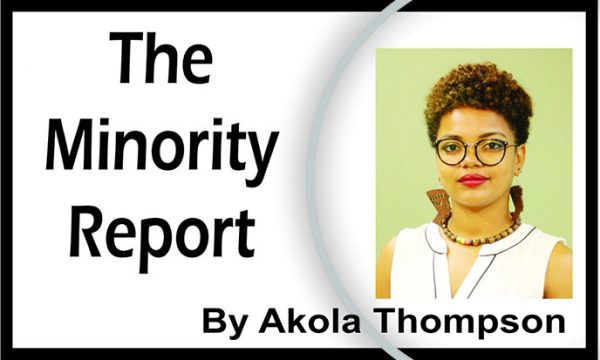
This is the myth we comfort ourselves with. Unfortunately this myth contributes towards our reluctance in examining the harmful perceptions and attitudes we have towards each other. So when opportunities arise for communal reflection, I cannot help feeling a bit optimistic about the growth that might occur in a few. I hold on to this hope even while being cognizant that many would rather double down on the things that conform to their beliefs about groups of people. This was very apparent in the most recent of our ethno-economic outcry over a painting that was done by a young artist.
Many, including myself, took issue with the painting and the manner in which its subjects were portrayed. As an artist, I understand the necessity of individual expression and creative freedom in addressing concepts. I do not believe that artists should be overly concerned with pleasing the public as art serves to inspire, question and hold up a mirror to our ways, thoughts and beliefs as a society. Art however, is not without danger and artists need to be aware of this when it comes to portraying concepts that have the capacity for harm in polarized societies such as ours. As much as artists should have free rein to create, they must do due diligence to ensure that their pieces do not further promote damaging stereotypes about historically marginalized groups.
Choosing to focus solely on the artist rather than the larger context in which such a painting could be considered a good thing is where we have missed the mark though. There is still much work to be done in addressing the internalized anti-Blackness that permeates our country. Race and class are irremovable from each other and ethnic triumphalism is still the accepted standard here, the painting and the responses to it made that very clear. Whether unintentionally or not, the message that was sent was one of ethnic dominance and the trope of the grateful poor. It showed the way in which we deify politicians for doing the bare minimum of what is required of them while solidifying dangerous tropes of the single Black mother waiting on handouts. These tropes are easily accepted and replicated without question. Regardless of the artist’s intent, it does not change the harmful impact of the piece.
It is not enough to say that one does not see race and that it was not their intention to offend on the basis of race. Good intentions without insight and reflection will promote circular narratives of who is the perpetual saviour and who are the people perpetually requiring saving. There is a reason that art has always been a favoured tool of propagandists, it is very effective in shaping collective consciousness and can contribute to the deification and vilification of its subjects. As much as art is subjective, it is not wholly so. Artists are not removed from the society within which they live. The families we are born into, the communities we are raised in, our experiences and the ideologies that surround us shape who we are and what we put out into the world. We internalize the implicit biases and stereotypes about groups of people, rarely ever questioning them because that is what we have been taught and what has always been normalized. These negative portrayals are then passed on to the viewers and negative stereotypes are further compounded in the public’s mind.
Art, whether good or bad, causes us to think. One thing that should be taken away from this all is that art controversies are rarely ever about the art or artist themselves but rather about the community struggles and damaging societal norms in pluralistic societies such as ours. There needs to be room left for interrogating other perspectives, particularly when it is found that the perspectives one holds are problematic. Beliefs and actions that conform to stereotypes are not always easily identifiable. The biases that many of us hold are unconscious ones that shape our thoughts, behaviours and decisions towards groups of people. These implicit biases are insidiously dangerous and take active work to overcome, but overcoming them is not difficult, it just takes dedicated effort and a desire to be honest with one’s self about the things we have learnt and embraced as fact.





